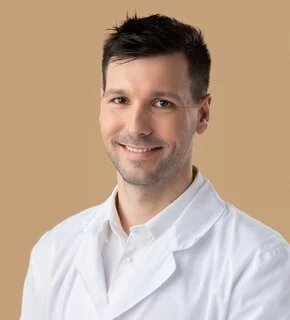Youngsters – movement, not mobile phones
Pediatric orthopedics is a separate branch of orthopedics. This is because growing children work differently than adults. Regular exercise is especially important for children, even in addition to everyday physical education classes. Sport is important mainly because it is the period when the skeletal system, the muscles and the posture develop. Thus, regular exercise in childhood can benefit in the long run.
A separate problem is that the advent of mobile phones and online games - a lot of sitting and poor posture - are causing new musculoskeletal problems in growing children, and screen time reduces the time spent exercising and playing sports.
There are also general suggestions for specific sports for children, such as swimming, which is extremely good in addition to posture-enhancing physiotherapy for those who have spinal problems.
Risky professional sports
Starting a sport young has benefits, but it can also have disadvantages. It can be helpful for children’s personality development as well as body development, but due to the high demands, overload syndrome can develop, which can cause a problem. Lots of exercise makes elite athletes much more vulnerable, this is not only true for kids. In addition, professional athletes want to bounce back quickly after an injury, so they often do not leave sufficient time for recovery and rest.
The middle-aged – cycling, the jolly joker sport
In middle-aged people, competitive sports are rarely mentioned, but of course regular exercise is still very important. Luckily, running is very fashionable these days, it’s one of the simplest sports, you don’t need anything but running equipment and it can be done anywhere, any time. In addition, it’s basically harmless, with no unpredictable contact. True, due to the load on the hip, knee and ankle joints, it does matter what the person is running on, so instead of concrete, choose the running track or cross-country running.
Playing football and basketball - the most popular hobby for men aged 35-50 - brings a variety of possibilities for injury. The risk of injury is increased if these sports are played only occasionally, without warming up and without regular training. It is common, for example, for someone to suffer an Achilles tendon rupture after even a friendly match.
“We orthopedic specialists consider cycling to be the jolly joker sport. In addition to being in the fresh air, cycling has a complex developmental effect on the thigh muscles,” says Dr. Rose Private Hospital’s specialist. "On top of that, it restores reduced range of motion, plus it’s an excellent form of movement after a major orthopedic surgery."
What can we do to prevent cartilage wear?
Our cartilage system is completely built up by the age of about 20, after which we are constantly losing it. The rate and amount of cartilage wear is affected by many things: for example, age, weight, diet, genetics. One thing is for sure however, cartilage can be renewed with injections of various agents, but basically cannot be rebuilt. Wear can be slowed and prevented: movement, for example, is a very effective way to prevent cartilage wear, as it releases joint fluid, which protects and nourishes the articular cartilage.
In the case of sideways curvature of the spine (scoliosis), cartilage wear can be prevented with physiotherapy started in time, and in the case of ligament rupture it is worth repairing the injury to prevent and reduce the cartilage abrasion effect of these deformities.
In old age - frequent walks ward off osteoporosis
The time will come when almost everyone will have emerging or developed cartilage damage. The cartilage-nourishing effect of exercise naturally helps in old age as well. True, at this stage of life, less strenuous forms of exercise, such as hiking, biking, or tennis, for example, are preferred. Very fashionable nowadays is Nordic walking when you walk briskly with special poles. At the age of 70-80, this form of exercise is also very useful, as the lower and upper body move simultaneously.
Contact sports, however, where the body may collide with another body or some fixed or moving object, should be avoided as the risk of injury is significantly higher than with non-contact sports – warns Dr. György Márk Hangody.
Osteoporosis is already common at this age, especially in women who experience a decrease in bone mineral density after the menopause. Exercise is an effective antidote to this problem too, although medication is also needed in more severe cases. Vitamin D, for example, is a very useful dietary supplement because it not only helps maintain bone mass but also supports the immune system.
Modern prosthetic surgeries – they get up and walk
In old age, most problems stem from cartilage wear, but injuries due to osteoporosis are also common. These include hip, shoulder and wrist fractures from falls.
Fortunately, increasingly advanced therapies are available for these problems. In the case of hip and knee prostheses, doctors can use implants of the size and quality that are most suitable for the patient's size, age and condition. Surgical techniques have also evolved a lot. In the past, it took months, perhaps a year, for a patient to heal after such a prosthesis. Today, almost every clinic implants a hip or knee prosthesis without cutting through muscle, so that, for example, a patient who underwent surgery at Dr. Rose on Tuesday can go home with a walking aid on Friday on their own two feet, once they are taught in the meantime how to use the stairs. And after six weeks, the recovery is already 80 percent.

